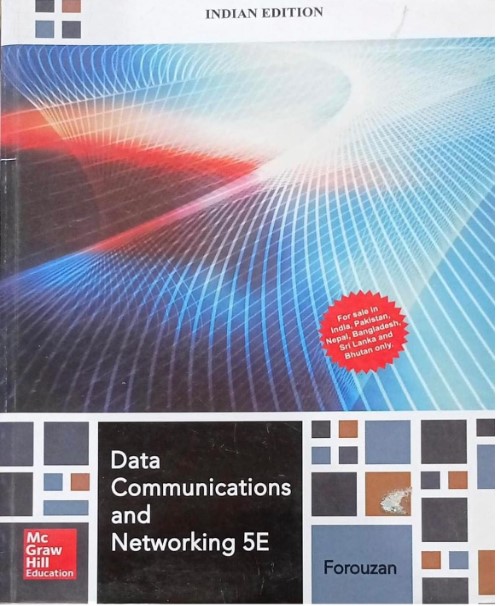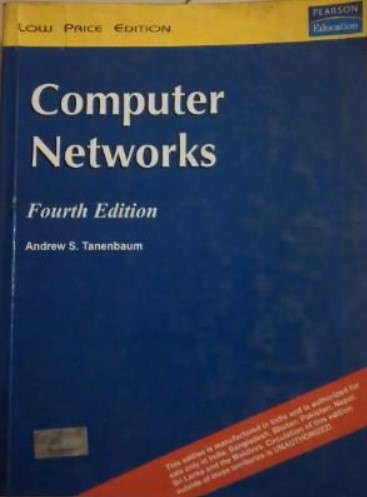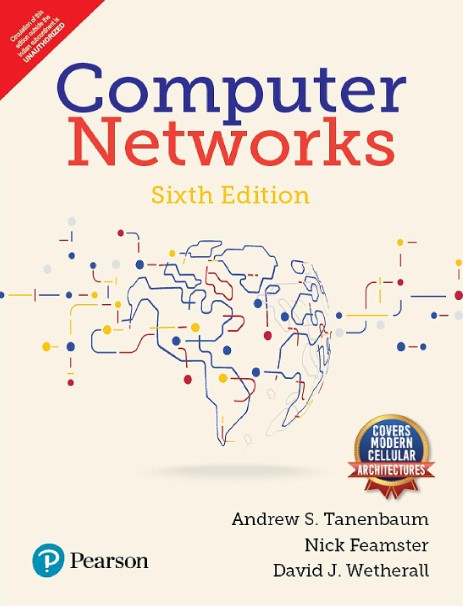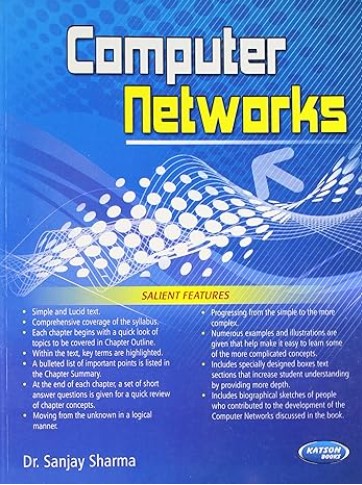Q1 – Match List-1 with List-2
List – 1 | List – 2 |
(a)Monoalphabetic Cipher | (I)Round Key |
(b)DES | (II)One-to-many relationship |
(c)Stream Cipher | (III)One-to-one relationship |
(d)Polyalphabetic Cipher | (IV)Feedback mechanism |
Choose the correct answer from the options given below:
(a)-III, (b)-I, (c)-IV, (d)-II
(a)-III, (b)-IV, (c)-II, (d)-I
(a)-I, (b)-III, (c)-IV, (d)-II
(a)-II, (b)-I, (c)-IV, (d)-III
(UGC NET DEC 2023)
Ans – (1)
Explanation – A monoalphabetic cipher is the type of encryption where the ciphertext letter corresponding to each letter of the plaintext has always been a fixed letter, therefore, a one-to-one relationship between original and encrypted letters exists.
Data Encryption Standard (DES) is the popular encryption algorithm applied in many stages or rounds in order to encrypt data. With each round a different round key is applied derived from the principal key.
In a stream cipher, the information is encrypted bit by bit or byte per byte instead of processing it in blocks. Most use the feedback mechanism, that is, past encrypted bits are used to determine future encryption.
A polyalphabetic cipher changes the substitution pattern throughout the message, meaning that the same letter in plaintext can be replaced with different letters in ciphertext at different positions. Therefore, this creates a one-to-many relationship, and it is much safer than a monoalphabetic cipher.
Q2 – Arrange the following steps in the correct order for a DHCP Client to renew its IP lease with a DHCP server:
(a) DHCP client sends a DHCPREQUEST message
(b) DHCP server acknowledges the renewal with a DHCPACK message
(c) DHCP client checks the local lease timer and initiates renewal
(d) DHCP server updates its lease database
Choose the correct answer from the options given below:
(a), (b), (c), (d)
(c), (d), (b), (a)
(c), (b), (a), (d)
(c), (a), (b), (d)
(UGC NET DEC 2023)
Ans – (4)
Explanation – DHCP (Dynamic Host Configuration Protocol) is a network protocol that enables the automatic assignment of an IP address, subnet mask, gateway, and DNS servers to a device on the network. This protocol eliminates the need to configure each device manually.
DHCP Server – Assigns a dynamic IP address to a client.
DHCP Client – A device requesting an IP address, e.g., a computer and/or a phone.
DHCP Lease – An assignment of a temporary IP address, which has a duration.
DHCP Messages – Consist of DHCPDISCOVER, DHCPOFFER, DHCPREQUEST, and DHCPACK in leasing of IP addresses.
The question is to how the client should request the renewal of its lease with a DHCP server just before the lease has expired.
A DHCP lease is bound for a certain amount of time and needs to be renewed. The client must send a request for lease renewal, acknowledged by the server.
Here is the answer –
(c) The client checks on its lease timer to see if it is time to additionally renew its lease.
(a) The client sends a DHCPREQUEST message to the server requesting a lease renewal.
(b) The server responds with a DHCPACK message acknowledging this lease renewal.
(d) The server then updates its lease database to reflect the renewed lease.
Q3 – Which of the following is not a field in TCP header?
Sequence Number
Checksum
Fragmentation offset
Window Size
(UGC NET DEC 2023)
Ans – (3)
Explanation – The TCP header does not include a Fragment Offset field. The responsibility of this field belongs to the IP header and not TCP.
Thus, answer option (3) is correct considering the Fragment Offset.
Q4 – A multiplexes combines for 100 Kbps channels using a time slot of 2 bits. What is the bit rate?
100 Kbps
200 Kbps
40 Kbps
1000 Kbps
(UGC NET DEC 2023)
Ans – (Can’t tell)
Explanation – The question is wrong.
We think, the question must be this –
A multiplexer combines four 100 Kbps channels using a time slot of 2 bits. What is the bit rate?
- 100 Kbps
- 200 Kbps
- 400 Kbps
- 1000 Kbps
In this question, a multiplexer combines four channels transmitting at 100 Kbps each.
Each channel transmits 2 bits during a time-slot.
To arrive at the total bit rate, the number of time slots sent in one second needs to be calculated first.
Since each is sending at 100,000 bits, which means 50,000 time slots are sent in one second due to two bits per channel being sent in one time-slot.
Each time slot consists of 8 bits in total (as we have 4 channels, and each is sending 2 bits). It follows that the total bit rate is 50,000 x 8, which equals 400,000 bps, which is 400 Kbps. In this way, the answer is that the information rate here is probably 400 Kbps.
Q5 – In “bit stuffing”, each frame begins and ends with a bit pattern in hexadecimal?
Ox8C
Ox6F
OxFF
Ox7E
(UGC NET DEC 2023)
Ans – (4)
Explanation – Bit stuffing uses some sequences of bits (sometimes called flags) to indicate the beginning and the end of a frame in the transmission of data.
Each frame begins and ends with a specific pattern of bits. Usually, that form, in binary, is
Binary – 0111110
Hexadecimal – 0x7E
With a view to avoiding any ambiguities that would occur if the same flag sequence should appear in the raw data, one other bit, normally a 0, is stuffed after five consecutive ones (11111). This is done to avoid the risk of misidentification of frames by the receiver.
Thus, the frame begins and ends with hexadecimal 0x7E.
Q6 – Which of the following are examples of CSMA channel sensing methods?
(a) 1-persistent
(b) 2-persistent
(c) p-persistent
(d) o-persistent
Choose the correct answer from the options given below
(a), (b) and (d) only
(a), (c) and (d) only
(b), (c) and (d) only
(a), (b) and (c) only
(UGC NET DEC 2023)
Ans – (2)
Explanation – Types of CSMA channel sensing mode
1-Persistent – It listens to the shared channel first and sends data immediately if the channel is free. If not, it will have to wait and, by observing the channel continuously, transmit the frames as soon as it finds it free. Thus, it’s an aggressive transmission algorithm.
Non-Persistent – It first checks the channel for data transmission. If the channel is idle, the node will transmit data immediately. If it is busy, however, the station must wait for some random time (not continuously), and once it detects that the channel is again free, transmission occurs.
P-Persistent – This is an amalgamation of the 1-Persistent and Non-Persistent modes. Each of the nodes senses the channel in 1-Persistent mode. If it is sensed that the channel is unoccupied, the node transmits the frame with a P probability. If the data is not transmitted, then, after waiting first for a random period of time (observed with the (q = 1-p probability)), the frame will attempt transmission again with the start of the next time slot.
O-Persistent – A supervisory node will order every node to transmit during its designated time slot when the medium becomes idle.
So, the 2nd option is correct.
Q7 – Which of the following statement/s is/are NOT CORRECT?
(a) OSPF is based on distance-vector routing protocol.
(b) Both link-state and distance-vector routing are based on the least cost goal.
(c) BGP4 is based on the path-vector algorithm.
(d) The three-node instability can be avoided using split horizon combined with poison reverse.
(e) RIP is based on link state algorithm.
Choose the correct answer from the options given below:
(a), (d) and (e) only
(a) and (b) only
(b) and (c) only
(b), (c) and (e) only
(UGC NET DEC 2023)
Ans – (1)
Explanation – Routing refers to the process of finding the best path for data to travel from one computer (or network device) to another computer or network device through a network, like the internet.
Static Routing
The path is manually set by the network administrator.
Dynamic Routing
Automatically updates/learn/upgrades the best path based on change in the network.
By the following routing protocol (OSPF, RIP, BGP).
Protocol | Type |
|
OSPF (Open Shortest Path First) | Link-State Routing Protocol | It finds the shortest path using the Dijkstra algorithm. |
RIP (Routing Information Protocol) | Distance-Vector Routing Protocol | Each router tells its neighbours how far destinations are using hop count (number of routers to cross). |
BGP (Border Gateway Protocol) | Path-Vector Routing Protocol | Instead of finding the shortest path, it chooses the most stable and policy-based path. |
(a) OSPF is based on distance-vector routing protocol. – Not Correct
(b) Both link-state and distance-vector routing are based on the least cost goal. – Correct
Because it finds least cost or shortest path between the nodes in a network.
(c) BGP4 is based on the path-vector algorithm. – Correct
(d) The three-node instability can be avoided using split horizon combined with poison reverse. – Not correct
What this means is – Although split horizon and poison reverse technique help reduce routing loops, three-node instability associated with distance-vector routing is not completely addressed.
Distance vector routing updates take time to converge, which is why there is a three-node instability.
(e) RIP is based on link state algorithm. – Not Correct
Hence, option 1 is the answer.
Q8 – Has functions are used to produce the message digests which are then encrypted with a private key to get :
Public key
Digital signature
Cipher text
Data Encryption Standard
(UGC NET DEC 2023)
Ans – (2)
Explanation – It’s not “Has”, its “Hash”.
In cryptographic applications, hash functions create a message digest (a fixed-size representation of data). In a digital signature, the message digest is encrypted using the sender’s private key to guarantee authenticity and integrity.
How Digital Signatures Operate
- The sender applies a hash function for the message to produce the message digest.
- The message digest is then encrypted with the sender’s private key.
- The encrypted digest is sent along with the message.
- When the receiver receives the encrypted digest, an algorithm is executed using the receiver’s public key, decrypting the original message.
- The digest, which was created anew, is then compared to ascertain its accuracy.
Q9 – The work done by UDP is/are:
(A) Congestion control
(B) Flow control
(C) Retransmission
(D) Segments transmission
Choose the correct answer from the options given below :
(A) and (D) Only
(C) Only
(D) Only
(B) and (C) Only
(UGC NET DEC 2023)
Ans – (3)
Explanation – UDP is a transport protocol that provides for transmission of datagram segments in the order and delivery specified by destination but not guaranteed. Each packet is sent without waiting for an acknowledgment.
(A) Congestion control – It does not offer any congestion control, packets are sarcastically sent regardless of congestion.
(B) Flow control – UDP lacks flow-control capabilities that would prevent the sender from flooding the receiver with packets.
(C) Retransmission – It is not an obligation for UDP to ensure delivery, rather, it will silently drop a packet and move on to transmit the next one.
Q10 – Which of the following statement/s are CORRECT ?
(A) NRZ is a bipolar scheme in which the positive voltage define bit is 0 (zero).
(B) NRZ-L and NRZ-I both have an average signal rate of N/2.
(C) The idea of RZ and NRZ-L are combined into Manchester scheme.
(D) NRZ-L and NRZ-I both have DC component problems.
(E) The minimum bandwidth of Manchester and differential Manchester is 3 times that of NRZ.
Choose the correct answer from the options given below :
(A), (B) and (C) Only
(A), (C), (D) and (E) Only
(B), (C) and (D) Only
(A), (B), (C) and (E) Only
(UGC NET DEC 2023)
Ans – (3)
Explanation – The first statement (A), that NRZ is a bipolar scheme-where a positive voltage volume is said to represent bit 0-is not true. NRZ is either a unipolar or a polar scheme, and not bipolar. In NRZ-L, voltage levels directly represent bits. In NRZ-I, a transition occurs on bit 1.
The second statement (B) is correct. Both NRZ-L and NRZ-I average a signal rate of N/2, because they do not change state at every bit, the baud rate is half the data rate.
The third statement (C) is also correct, as Manchester encoding combines features of RZ and NRZ-L, in that there is some transition per each method thereby facilitating synchronization.
The fourth statement (D) is correct, that both NRZ-L and NRZ-I have DC-component problems because of long strings of constant voltage levels that can lead to synchronization problems.
The fifth statement (E) is incorrect because Manchester and Differential Manchester encoding require twice the bandwidth of NRZ, rather than three times, because every bit has a transition. Therefore, answer 3 is a correct.







